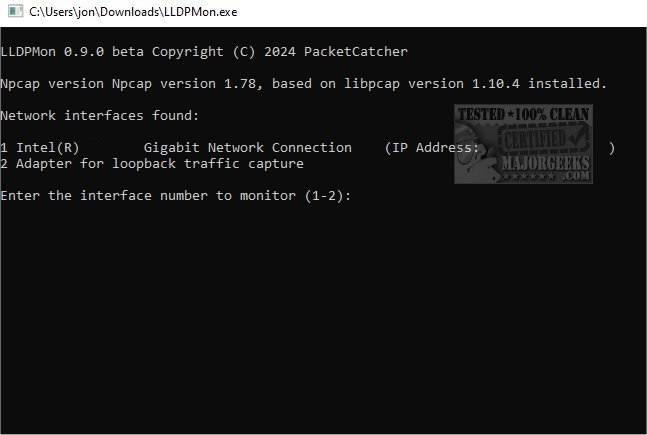LLDP-CDPMon version 1.3.0 has been released, enhancing network monitoring capabilities by allowing users to capture and analyze LLDP (Link Layer Discovery Protocol) and CDP (Cisco Discovery Protocol) packets transmitted over Ethernet connections. This tool is essential for network administrators, as it facilitates the exchange of crucial information about network devices, including their identities, capabilities, and connectivity statuses. By capturing and displaying this data, LLDP-CDPMon helps create a comprehensive map of the network topology, making it easier to identify potential issues or misconfigurations, especially in large and complex network environments.
To use LLDP-CDPMon, users need to ensure they have the latest version of Npcap installed, which can be downloaded from https://npcap.com. After installation, users can run LLDP-CDPMon, select the desired network interface to monitor, and stop the monitoring process by pressing CTRL + C. The tool offers various command-line options for flexibility:
- Running `LLDP-CDPMon.exe` without parameters displays basic device information, including system name, description, management address, port description, and port ID.
- The `/detail` parameter provides a comprehensive view of all data advertised by the switch or networking device within the LLDP or CDP packet.
- The `/capture` option enables users to save LLDP or CDP packets to a file for later analysis. If any unknown TLV (Type-Length-Value) messages are encountered, users can email the captured .pcap file to PacketCatcher@outlook.com for inclusion in future updates.
In summary, LLDP-CDPMon is a powerful tool for network analysis that aids in maintaining visibility and troubleshooting in diverse network setups. By leveraging LLDP and CDP packet data, network administrators can optimize performance and enhance the reliability of their infrastructure. Moving forward, continued updates and user feedback will likely lead to further improvements in LLDP-CDPMon's functionality and capabilities
To use LLDP-CDPMon, users need to ensure they have the latest version of Npcap installed, which can be downloaded from https://npcap.com. After installation, users can run LLDP-CDPMon, select the desired network interface to monitor, and stop the monitoring process by pressing CTRL + C. The tool offers various command-line options for flexibility:
- Running `LLDP-CDPMon.exe` without parameters displays basic device information, including system name, description, management address, port description, and port ID.
- The `/detail` parameter provides a comprehensive view of all data advertised by the switch or networking device within the LLDP or CDP packet.
- The `/capture` option enables users to save LLDP or CDP packets to a file for later analysis. If any unknown TLV (Type-Length-Value) messages are encountered, users can email the captured .pcap file to PacketCatcher@outlook.com for inclusion in future updates.
In summary, LLDP-CDPMon is a powerful tool for network analysis that aids in maintaining visibility and troubleshooting in diverse network setups. By leveraging LLDP and CDP packet data, network administrators can optimize performance and enhance the reliability of their infrastructure. Moving forward, continued updates and user feedback will likely lead to further improvements in LLDP-CDPMon's functionality and capabilities
LLDP-CDPMon 1.3.0 released
LLDP-CDPMon allows you to capture and analyze LLDP/CDP packets that are transmitted over Ethernet connections.


